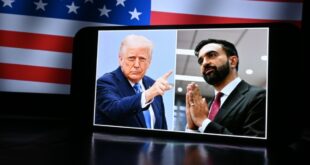Dr. Shehab Al-Makahleh
On November 15–16, 2025, senior intelligence chiefs, defense ministers, and military planners from several states convened quietly in an unnamed capital. Over two days, discussions focused on one scenario: a coordinated strike on Iran, paired with parallel operations targeting the Houthis in Yemen and Hezbollah in Lebanon. A tentative window—the second half of December 2025—was identified as the most viable period for such an undertaking, reflecting a strategic assessment that the Middle East may be approaching a decisive inflection point.
For more than a decade, Iran has expanded its reach across the region through a network of armed proxies stretching from Saada to Beirut. What once appeared to be incremental influence-building has matured into a robust architecture capable of threatening global shipping lanes, disrupting energy flows, and destabilizing governments from the Levant to the Gulf. Recent escalations in the Red Sea and intensifying clashes in Syria and Lebanon have reinforced a growing belief in several capitals: containment has eroded, and the cost of inaction is rising.
A Regional Order Under Strain
Participants in the mid-November meeting understood that any multi-front strike would be far from symbolic. Such an operation would be a response to fast-deteriorating threat matrices—particularly Iran’s integration of missile, drone, maritime, and cyber tools into a single deterrent ecosystem.
But they also understood something else: striking Iran would set off a chain reaction that no coalition could fully control. Likely Iranian responses span multiple fronts:
-
Missile or drone attacks on Gulf energy infrastructure
-
Disruption of shipping in the Strait of Hormuz, Bab al-Mandab, and the Arabian Sea
-
Cyberattacks on financial networks and critical infrastructure
-
Escalation through proxies in Iraq, Syria, and Lebanon
Each of these theaters carries real escalation potential—and the risk of miscalculation is unusually high.
Economic Fallout With Global Reach
The economic implications are no less severe. Even a brief disruption in the Strait of Hormuz could rattle global markets and shred supply chains already weakened by geopolitical shocks. Despite ambitious diversification strategies, Gulf economies remain structurally tied to the energy ecosystem—both in revenue and in global market expectations. There is no actor—neither the United States nor an emerging Eastern Mediterranean corridor—capable of fully offsetting an immediate Gulf supply shock.
Inside Iran’s Strategic Blind Spot
Perhaps the most destabilizing factor lies not in hardware or geography but in political isolation inside Iran’s top decision-making circles. A rigid hierarchy—reinforced by ideological loyalty—often filters out unwelcome intelligence and reframes reality to match official narratives. Similar echo chambers exist within Hezbollah’s leadership and parts of Iraq’s militia-politico structure.
This insulation reduces the leadership’s ability to calibrate responses realistically. It also increases the probability of misjudgment—historically one of the key accelerants of Middle Eastern wars.
A Region on the Edge
As 2025 draws to a close, the Gulf faces its most delicate moment since the Iranian nuclear crisis of the early 2010s. Mega-projects—smart cities, digital economies, world-class financial hubs—could be jeopardized in a single season if the region tips into a multi-front confrontation.
One veteran Gulf policymaker summarized the stakes bluntly:
“A large war now would shift us from managing sovereign wealth funds to depleting them.”
The November meeting signals not inevitability but urgency—a recognition that the regional security architecture, eroded by proxy conflicts and shrinking deterrence, is entering its most dangerous test in decades. A strike window in late December 2025 would do more than challenge Iran’s regional posture. It would shape the trajectory of energy markets, global trade, and regional alliances for years to come.
The Unanswered Questions
The strategic question confronting Middle Eastern leaders is no longer whether the region is approaching an explosion. It is whether they can prevent a conflict whose contours they themselves have begun to draw—and whether they are prepared for the consequences of lighting a match above the world’s most critical energy corridors.
 Geostrategic Media Political Commentary, Analysis, Security, Defense
Geostrategic Media Political Commentary, Analysis, Security, Defense





